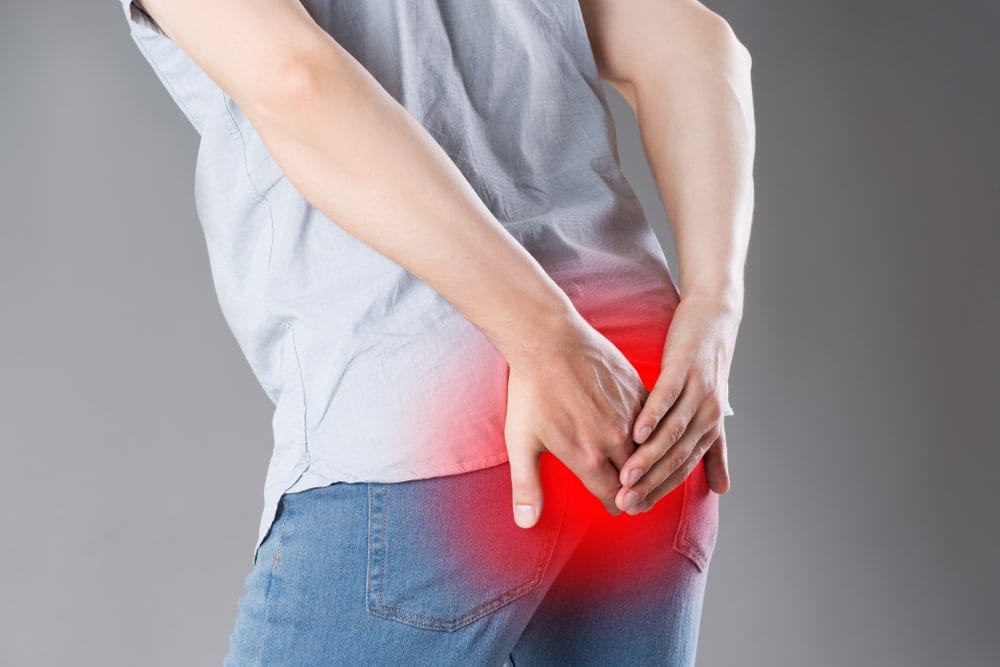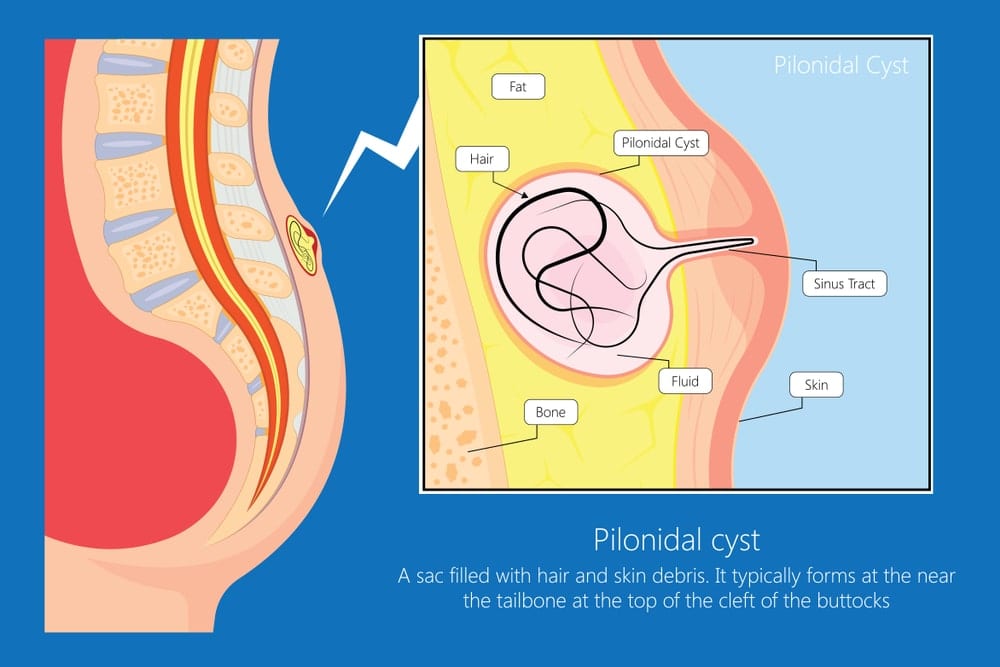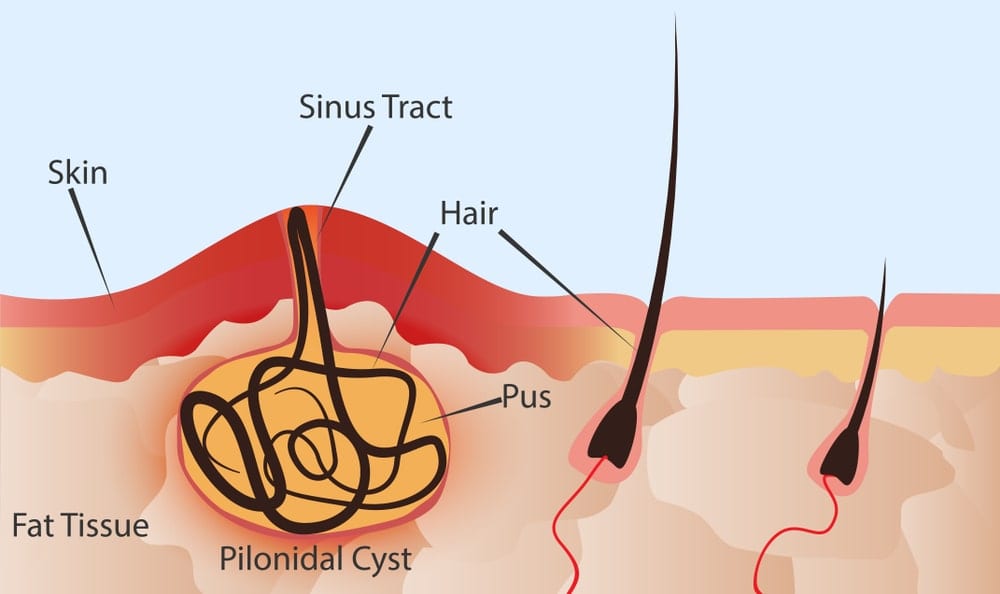Las Vegas Pilonidal Cyst Removal
What Is a Pilonidal Cyst?
Pilonidal cysts occur when hair, dirt, or debris becomes entrapped in the pilonidal sinus, a tiny opening in the skin near the tailbone. When this opening becomes clogged by the debris, it fills with fluid to form a pilonidal cyst. These cysts are located in the crease of the buttocks, and are usually caused by a prior skin infection. Pilonidal disease is a persistent skin infection that affects the area near the coccyx (tailbone). In some cases the cyst can become infected, resulting in an abscess that is often extremely painful. Pilonidal cyst removal can be achieved by draining the cyst, or it can be removed surgically. Dr. Chanu Dasari is an expert doctor and surgeon. He offers top quality, minimally invasive pilonidal cyst treatments to his patients. Affiliated with Spring Valley Hospital and Flamingo Surgery Center, Dr. Dasari has served the people of Las Vegas for almost a decade, performing numerous complex surgeries with exceptional results.
Pilonidal Cyst Signs & Symptoms
You may not have any noticeable symptoms at first other than a small, dimple-like depression on the surface of your skin. When it becomes infected, a pilonidal cyst becomes a swollen mass, or abscess. These masses can vary in size, but always occur near the tailbone.
Common signs and symptoms of pilonidal cyst include:
- Tenderness to touch
- Pain when sitting
- Sore skin around the area
- Swelling of the tailbone area
- Pus or blood draining from the abscess
- Unexplained odor
- Mild fever
- Hair protruding from the abscess
- Holes forming in the skin
When you experience these symptoms, you should contact a physician to seek treatment right away.
When Is It Time to Visit a Las Vegas Pilonidal Cyst Specialist?
A Pilonidal cyst may start out as a mild skin condition, but can quickly become infected and painful. Though pilonidal cysts are benign, they are notorious for recurrence. The cyst must be properly drained, lanced, or surgically treated for prevention of recurring symptoms. It is important to see a pilonidal cyst removal specialist straight away if you feel any of the above symptoms to avoid long-term serious complications.
Pilonidal Cyst Removal in Las Vegas
An infected pilonidal cyst should be treated as soon as it is diagnosed. Most of the serious complications of the pilonidal cyst are preventable at early stages with prompt assessment, early diagnosis, and skilled surgical treatment.
Surgical treatment options include:
Incision and drainage – Once the area to be operated on is instilled with a local anesthetic, a surgeon makes a small diamond-shaped cut in the lower back to drain out the hair follicles, fluid, and dirt. The wound is left opened and packed with gauze. The healing period takes around 3 weeks, and regular dressing is needed until the wound is healed.
Advantages
- Drainage of infected cysts
Disadvantages
- Painful dressing
- Slower healing process
- May not recover completely
Flap Surgery – Advance flap surgery is the most successful method for both removing the cyst and transferring healthy tissue to cover the excision site. This method reduces the likelihood of cyst recurrence and has a higher rate of wound closure. The downside of this treatment is the need for large sutures to remain in place for several weeks. These sutures are typically removed in the clinic setting with minimal discomfort.
Laser Surgery – A diode laser of 1470nm is used during this surgery. The laser treatment involves the excision of the pilonidal cyst area, and it can also treat the superior and inferior extensions. It involves a small 1cm cut instead of a flap or a larger cut. However, this method works best only for medium-sized cysts. The larger cysts still have a risk for recurrence, and the smaller cysts have issues with skin damage.
Advantages
- Quick surgery
As an experienced pilonidal cyst removal specialist, Dr. Dasari is an expert in the treatment of these cysts and offers top surgical care to all of his patients.
Las Vegas Pilonidal Cyst Specialist Dr. Chanu Dasari
If you have recently experienced symptoms like the ones mentioned above, schedule an appointment with Dr. Dasari’s clinic right away for a diagnosis. Dr. Dasari is an affiliate of Spring Valley hospital and Flamingo Surgery Center. He is committed to serving the Las Vegas community with exceptional minimally invasive surgical treatment. He provides quality pilonidal cyst removal in Las Vegas to all of his patients. You can call his clinic, Minimally Invasive Surgery, at (702) 602-6600 for a consultation today.










